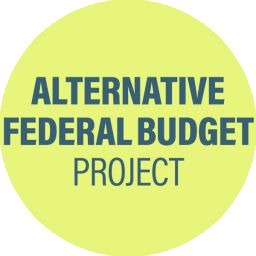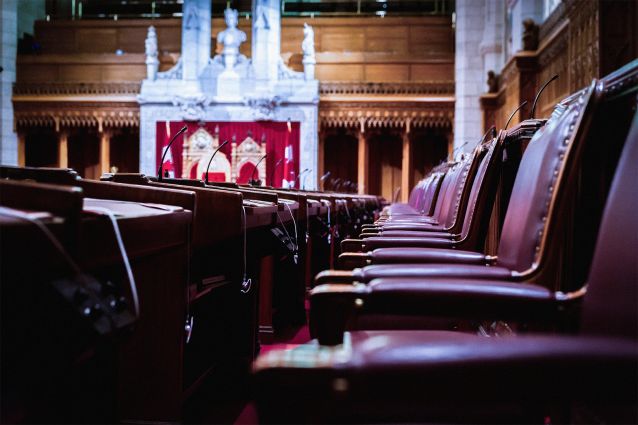Introduction
For a growing number of Canadians, the housing market is broken. In 2021, an estimated 1.5 million Canadian households lived in core housing need, defined as living in an unsuitable, inadequate, or unaffordable dwelling.1 The cost of home ownership remains close to all-time highs relative to income. Tight rental markets have given landlords tremendous bargaining power to raise rents sky high. And homelessness is pervasive across the country, from street and park encampments to people getting by in vehicles or by couch surfing.
At its core, Canada’s housing market is afflicted by decades of financialization—the treatment of housing primarily as an investment, rather than a place to live. As the National Right to Housing Network comments, “From unreasonable rent hikes to evictions and renovictions, poor maintenance, displacement of communities, and discrimination, financialization has hugely damaging impacts on the right to housing in Canada, particularly for already-disadvantaged groups such as seniors, low-income tenants, people with disabilities, members of Black communities, immigrants, and many others.”2
This housing crisis has been brewing for decades. Fixing it will require major new public investments for a generation.
Overview
Adequate, affordable housing is a basic human need and a socioeconomic determinant of health, the absence of which results in poorer physical and mental health outcomes. Canada’s 2019 National Housing Strategy Act recognized that “housing is essential to the inherent dignity and well-being of the person” and that “the right to housing is a fundamental human right affirmed in international law.”3
In practice, the National Housing Strategy (NHS) has yet to fully allocate the resources—or leverage critical policy levers—necessary to realize its own rhetoric. The NHS has spurred some new rental housing through low-interest loans (Rental Construction Financing Initiative), has been slowly rolling out a modest amount of new social housing (National Housing Co-Investment Fund), and more recently has supported the purchase of hotels and other facilities to address homelessness (Rapid Housing Initiative). However, its funding profile is dominated by loans to for-profit rental development rather than investments in non-market housing.
Even by its own measurement standards less than one-third of NHS units delivered can be considered affordable. This is in direct opposition to Canada’s human rights obligation to devote a “maximum of available resources” and “all appropriate means”4 to ensure people’s right to housing is realized, prioritizing those in greatest need.
Ramping up non-market housing
A non-profit model inherently reduces costs by cutting out developer profits and targeting rents in new units on a break-even basis, rather than whatever the market will bear. The federal government is ideally poised to address the core challenge: the upfront capital costs of getting new housing built. Once built, the stream of rental income from new housing can repay the initial investment. A ramp-up of the scale we describe below would benefit from a coordinated approach that also meets Canada’s climate adaptation and mitigation goals, such as multi-unit buildings at passive house energy efficiency standards with developments close to transit, shops, public services, and other amenities.
Addressing the intersection between homelessness, mental health, and addictions
Upstream investments across a wide range of housing are necessary to stem the flow of people into homelessness and more precarious housing situations. A bold plan to build new supply rooted in the belief that housing should be a human right will end homelessness within a decade. This includes a spectrum of housing linked to mental health supports and to treatment and recovery beds.
Advancing reconciliation
Budget 2023 makes a welcomed new investment in urban, rural, and northern Indigenous housing. However, its $4 billion commitment falls well short of the estimated $56 billion over 10 years that Canada’s own National Housing Council recommended.5 To address these disparities in housing conditions in urban, rural, and northern settings, Canada requires sustainable investments in permanent housing options at a scale commensurate with need and in alignment with Indigenous rights to self-determination under the United Nations Declaration on the Rights of Indigenous Peoples (see the First Nations chapter).
Building transparency into the process
The NHS aims to put one-third of its investments, with a minimum of 25 per cent, towards serving the unique needs of women and their children. To ensure progress along the way, the capacity and resources of the Office of the Federal Housing Advocate will be strengthened to identify and remedy systemic violations of the right to housing. This advocate will also undertake an independent review and audit of the National Housing Strategy to date.
Actions
The AFB will renovate the National Housing Strategy to ensure that programs genuinely and positively impact those who bear the brunt of Canada’s housing and homelessness crisis. The AFB maintains existing NHS planned loans and grants but removes the $25,000 per unit cap on National Housing Co-Investment Fund grants (implemented in 2022) to ensure more projects with greater affordability can get off the ground.
The AFB will continue the Rental Construction Financing Initiative to provide low-interest loans for all rental housing projects because of the additional costs of building housing arising from higher interest rates. This will include loans to for-profit developments that meet (more stringent) affordability criteria. Meanwhile, eligibility criteria for non-profit developers will be eased.
The AFB will build one million new non-market and co-op housing units over the next decade. This AFB allocates $20 billion a year in capital funding to the National Housing Co-investment Fund to build a minimum of 100,000 new units per year (provincial partnerships and public and community-owned land contributions are assumed to contribute another $10 billion). Capital funds will be used directly to build publicly owned affordable housing, as well as being advanced to non-profit developers as a long-term mortgage (where payments will be recycled back into funding in future years).
The AFB’s housing investments will be broad-based but with specific targets for Indigenous Peoples, seniors, people with disabilities, immigrant families, lone parents, and people fleeing domestic violence. All units will employ a universal design and a minimum of 10 per cent of new units will be set aside for urban Indigenous households. This also includes substantial new development of supportive and complex care housing that provides wrap-around support for people experiencing homelessness, addictions, and/or mental health challenges.
The AFB will accelerate the rollout of the Federal Lands Initiative of the NHS, which to date has done little to put federal land into use for affordable housing. The AFB also introduces a $10 billion Public Land Acquisition Fund, a dedicated multi-year fund to bring additional land into public ownership towards the construction of non-market, affordable rental housing.
The AFB will also support the community housing sector to acquire existing affordable rental buildings to bring them into the non-profit world. Building on the British Columbia government’s new $500 million Rental Protection Fund for non-profit housing providers to purchase existing rental buildings, this AFB will create a $20 billion Housing Acquisition Fund to support this goal of maintaining the supply of affordable housing for low- and modest-income households over time. Funds will be provided to non-profit providers as a low-interest mortgage that can be repaid over a 50-year period. This will support the acquisition of up to 60,000 rental units.
The AFB supports the creation of a deferrable property surtax on properties worth more than $1 million to ensure that those who have received windfalls from rising home prices contribute to building the next generation of affordable housing. The surtax would start at a rate of 0.2 per cent on the portion of assessed values between $1 million and $1.5 million, 0.5 per cent on values between $1.5 million and $2 million, and one per cent on assessed values above $2 million. For example, a house valued at $1.2 million would pay $400 per year while a house valued at $2.5 million would pay $8,500 per year.6 The surtax would only apply to the top 10 per cent most valuable homes and would be fully deferrable until time of sale for households on fixed incomes. Purpose-built rental properties would be exempt from the surtax.
This AFB will end various real estate tax incentives, which only serve to inflate the housing market. This includes new planned incentives such as a Rent-to-Own program and a new Tax Free First Home Savings Account. The AFB will also prevent the further financialization of housing by stopping the preferential tax treatment given to real estate investment trusts (REITS).







